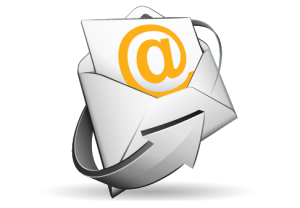Everything about Web and Network Monitoring
by Lili Petkova | Jun 11, 2012
 Basic tips you should be aware of before you start with your e-mail campaign
Basic tips you should be aware of before you start with your e-mail campaign
Here is a list of the 7 basic rules, which will guide you through the planning and creating of your email campaigns:
How often should you send your e-mails – so that is often enough, but not too often? You’ll find the right frequency with time. Test your subscribers and find out when you’re becoming annoying by the number of unsubscriptions. However, you should send your messages at least once a month – otherwise your recipients may forget you and perceive your mails like spam. But everything more often than once a week is too risky – people will get annoyed by your e-mails.
You should stick with the frequency you’ve decided it’s best for you – send your e-mails on time (every week, every two weeks, every month). You should define the best week day to send your message too. If you want your potential or existing customers to read your e-mail at work – send it on Tuesday, Wednesday or Thursday. Because Monday is too busy, and on Friday people start thinking for the weekend. If you want your users to read your message at home, send it on Sunday afternoon – Sunday evening is considered the time when people check their e-mails. Avoid sending e-mail on holidays – people don’t read e-mails on holidays in most cases.
People don’t like to read mail from strangers, so include your name in the “From:” line in your message. Make sure you write short subject, including the name of your brand – the subject must be clear about what are users going to read in your message. If users don’t understand from who and what about is an e-mail, they certainly will think it’s spam and they won’t even open it. Avoid using words like “free”, “discount” “promotion”, “special” and similar in your subject. Spammers use them, so your message can be considered like spam from spam filters or from users.
Create your e-mails like you create your other marketing materials – your subscribers need to recognize you and your e-mail strategy is part of your overall marketing strategy. Stick with the same design every time, if you’re sending newsletters. Do not make major changes in other e-mail campaigns; this will help your brand awareness. Users will make the connection between your business and the e-mails. Design consistency in every marketing material means professionalism and trustworthiness in the eyes of the customers.
Preview your message and go through it carefully. Make sure the important stuff is at the beginning. Test all the links – your recipients must land on your website, either way your efforts are in vain. Crucial thing is that you test the way your message looks in different e-mail clients. Test it for the one that are most common in your country and correct it, if needed
Make sure your recipients will understand why are you sending them your message and what do you want them do. Don’t add too many links (not more than 2), and be clear what they will see when they follow your link. This will raise the effectiveness of the campaign.
This is no surprise – every online campaign needs a good landing page. When users read your e-mail and click on your links they expect to see certain things (what you’ve written in your e-mail) on the landing page. The design of the page must be similar as the design of the e-mails – this makes the connection between them and enlarges the chance users will make what you want them to make (purchase, register for an event, etc.). Make your landing page as simple as possible for the users. If you have high open rate of your e-mails and high CTR, but no results from your campaign, the problem is with your landing page – and that makes the whole campaign ineffective. Stick with the golden rule in internet – user must do what he wants in just three clicks on you page. Otherwise – you’ll lose him.
Users who don’t want to read your e-mails should unsubscribe from receiving them easy and fast. This guarantees you better effect from your future campaigns – why wasting money for users who obviously don’t want to buy anything from you or don’t want to know about your new service? You don’t want unhappy receivers, who can talk about their unhappiness with friends or on social networks and harm your image, so make the unsubscriptions easy for them. This would be a win-win situation. Another think you should keep in mind is, that these unsubscriptions must go into effect immediately – otherwise you’ll have even more unhappy users, who failed to unsubscribe.
Now you’re ready to start your e-mail campaign – but how will you actually understand if it is successful? Take a look at the important parameters for effectiveness of an e-mail marketing campaign in the next post about e-mail marketing.
Category: Articles | Tagged 2 Comments.
Web & Cloud
Monitoring








